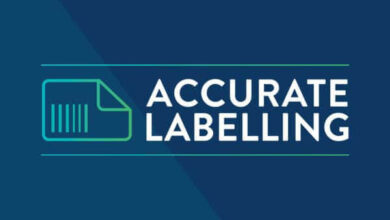How Can We Make Period Poverty in Canada Better?

Period poverty in Canada is a pressing issue that affects countless individuals. Tackling this problem requires a multifaceted approach. By addressing it from various angles, we can create meaningful change. In this blog, we’ll explore practical ways to combat period poverty in Canada, ensuring everyone has access to essential menstrual products and education.
Understanding Period Poverty in Canada
Firstly, period poverty refers to the lack of access to menstrual products, hygiene facilities, and education. Additionally, many Canadians struggle to afford these necessities. As a result, they may miss school, work, or social activities. Secondly, this issue disproportionately affects low-income individuals and marginalized communities. Consequently, addressing period poverty in Canada is vital for promoting gender equality and overall well-being.
Increase Accessibility to Menstrual Products
One of the most effective ways to combat period poverty in Canada is to increase the accessibility of menstrual products. By ensuring that everyone can obtain these essential items, we can significantly reduce the impact of period poverty.
- Distribute Free Menstrual Products
First, we can distribute free menstrual products in schools, workplaces, and public spaces. This initiative would ensure that no one misses out on opportunities due to a lack of access to these necessities. Several organizations are already working to provide free menstrual products in Canada. Expanding these efforts could make a substantial difference.
- Subsidize Menstrual Products
Another approach is to subsidize menstrual products. By reducing their cost, we can make them more affordable for everyone. Additionally, governments can easily play a crucial role in this by removing taxes on menstrual products and providing subsidies to manufacturers. This would lower the prices and make them more accessible to those in need.
Improve Menstrual Education
Education is a powerful tool in addressing period poverty in Canada. By improving menstrual education, we can dispel myths, reduce stigma, plus empower individuals to manage their periods effectively.
1. Implement Comprehensive Menstrual Education Programs
Implementing comprehensive menstrual education programs in schools is essential. Moreover, these programs should cover the biological aspects of menstruation and provide practical information on managing periods. By educating young people early on, we can help them feel more confident and prepared.
2. Provide Community Workshops
Community workshops can also play a significant role in improving menstrual education. These workshops can offer information and resources to individuals of all ages. By making this information accessible to everyone, we can create a more supportive environment.
Promote Awareness and Advocacy
Firstly, raising awareness about period poverty in Canada is crucial for driving change. By promoting awareness and advocacy, we can encourage more people to take action and support initiatives aimed at addressing this issue.
1. Launch Awareness Campaigns
Launching awareness campaigns can bring attention to the issue of period poverty in Canada. Additionally, these campaigns can use various media platforms to reach a broad audience. By highlighting the challenges faced by those affected, we can inspire more people to get involved and support efforts to combat period poverty.
2. Advocate for Policy Changes
Lastly, advocating for policy changes is another vital step. By working with policymakers, we can create lasting change. Furthermore, this includes pushing for legislation that supports the distribution of free menstrual products and the implementation of comprehensive menstrual education programs.
Support Non-Profit Organizations
Non-profit organizations like Help a Girl Out play an essential role in addressing period poverty in Canada. By supporting these organizations, we can help them expand their reach and impact.
1. Donate to Non-Profit Organizations
Firstly, donating to non-profit organizations is one of the most direct ways to support their efforts. Furthermore, financial contributions enable these organizations to purchase and distribute menstrual products, fund educational programs, and advocate for policy changes.
2. Volunteer Your Time
Secondly, volunteering your time is another valuable way to support nonprofits. By offering your top skills and expertise, you can help these organizations achieve their goals more effectively. Whether it’s organizing events, distributing products, or providing education, every effort counts.
Foster Community Support
Community support is vital in addressing period poverty in Canada. By fostering a safe sense of community, we can create a more inclusive plus supportive environment for everyone.
1. Create Community Support Groups
Firstly, creating community support groups can provide individuals with a safe space to share their experiences and access resources. Additionally, these groups can also offer emotional support, practical advice, and information on available services.
2. Encourage Open Conversations
Secondly, encouraging open conversations about menstruation can reduce stigma and foster a more supportive environment. By normalizing discussions about periods, we can create a culture of acceptance and understanding.
Collaborate with Businesses
Businesses can also play a significant role in addressing period poverty in Canada. By collaborating with companies, we can leverage their resources and influence to drive change.
1. Partner with Businesses for Product Donations
Firstly, partnering with businesses for product donations can help increase the availability of menstrual products. Additionally, many companies are willing to support social causes and can contribute significantly to these efforts.
2. Encourage Corporate Social Responsibility
Secondly, encouraging corporate social responsibility can also make a difference. By advocating for businesses to adopt policies that support menstrual equity, we can create a more inclusive and supportive workplace culture.
Conclusion
Addressing period poverty in Canada requires a collaborative and comprehensive approach. By increasing accessibility to menstrual products, improving menstrual education, promoting awareness and advocacy, supporting non-profit organizations, fostering community support, and collaborating with businesses, we can make a significant impact. Lastly, these organizations are committed to supporting these efforts and creating a more equitable society. Together, we can make period poverty in Canada a thing of the past.





